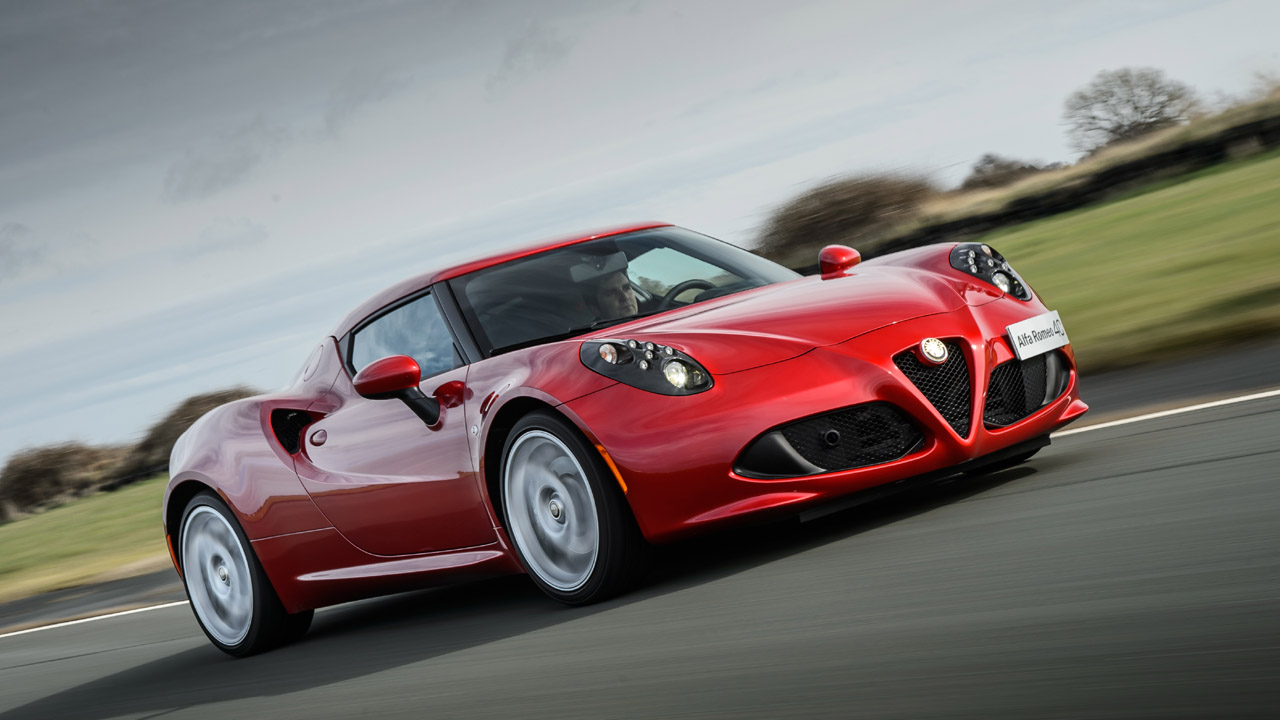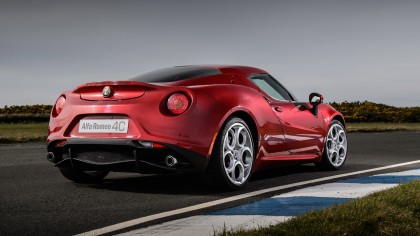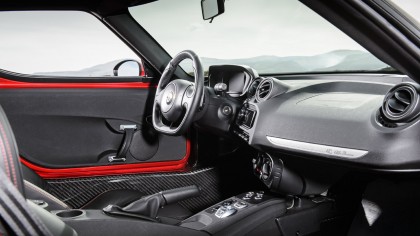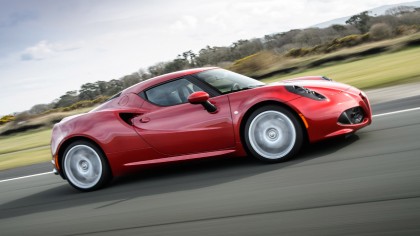Alfa Romeo's new 4C supercar proves that less is more and super fun too
Carbon-fibre to the core, 40MPG-plus and looks to die for

Can supercar remain relevant in this energy-conscious, technology-obsessed age?
That's the conundrum du jour for car enthusiasts. And it's a question addressed head on by the fabulous new Alfa Romeo 4C mini supercar.
That's because Alfa hasn't just used tech for tech's sake with the 4C. It's taken the concept of what makes a supercar back to first principles. Then it's considered how to use the latest technology to deliver the best possible driving machine.
Crucially, however, Alfa has done all that with more than one eye on relevance and sustainability.
Tech specs
Before we decide whether Alfa has pulled it off, let's cover some of the based tech specs. First up, the 4C is based on a carbon fibre core structure with alloy subframes. That's not unusual these days for a supercar.
But it's a first on any remotely sporting car that sells for anything close to the 4C's circa £50,000 price tag ($80,000-plus in the US). Only the BMW i3 offers similar use of carbon tech for less money and that is an electric runabout, not any kind of sports car much less supercar.

The 4C is also much smaller than conventional supercars. The net result is an extremely low kerb weight quoted at 895kg.
Get daily insight, inspiration and deals in your inbox
Sign up for breaking news, reviews, opinion, top tech deals, and more.
The whole small-size, low-weight thing becomes a virtuous circle as it allows Alfa to specify a modest 1.7-litre four-cylinder engine. Thanks to turbo technology, it puts out 237bhp.
But, again, with that low weight the result is a zero-to-62mph sprint of just 4.5 seconds. Properly quick, then. At the same time, the 4C scores 41.5mpg on the combined cycle.
And that's a real 41.5mpg. Not the fake mpg achieved by some hybrid supercars (BMW i8, cough) thanks to grid-supplied charge effectively coming for free.
That plug-in hybrids do so well at the moment is a quirk of the current testing methods. So, we're here to say the Alfa 4C is likely the most efficient supercar you can buy.
In-car tech
Of course, top speed is more aero than weight-limited, so the 4C tops out at a relatively modest 160mph. But then, how often are you likely to be travelling beyond 150mph? Here, again, it's a question of what is relevant for a modern supercar.

As for other techy features, the gearbox is the latest dual-clutch robotised item, the driver's instrument cluster is a fully configurable LCD panel with virtual dials and the DNA toggle button allows you to quick-switch between various driving modes, including a track mode with the safety and stability controls turned off.
What the 4C doesn't have, however, is terribly impressive multimedia chops. There's a re-branded, Alfa-ised Parrot Asteroid single-din stereo and that's about it.
Adequate, perhaps. But a good multimedia system wouldn't add a great deal of weight and it's an area where Alfa Romeo as a brand currently lags really quite badly. Even the brand new Uconnect system from the recently revised Mito and Giulietta is well off the pace.
Performance
Anyway, the net result is that the package looks strong on paper, barring the somewhat mediocre multimedia. And the car looks absolutely fabulous on the road. So does the downsized supercar driving experience add up?
The answer is a qualified yes. In many regards, this is a much more fun and involving car than even the fastest supercars – and also Porsche's Cayman, which is probably the 4C's closest competitor in the price lists.
That's a function of the light weight, the unassisted steering and the firm, linear brake pedal. You feel more connected to the 4C than most modern performance cars and that means more fun at lower speeds.

Generally, the way the 4C flows down a road and particularly through high speed corners is quite delightful.
Technology and cars. Increasingly the twain shall meet. Which is handy, because Jeremy (Twitter) is addicted to both. Long-time tech journalist, former editor of iCar magazine and incumbent car guru for T3 magazine, Jeremy reckons in-car technology is about to go thermonuclear. No, not exploding cars. That would be silly. And dangerous. But rather an explosive period of unprecedented innovation. Enjoy the ride.